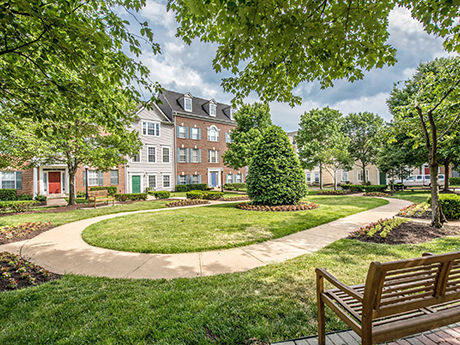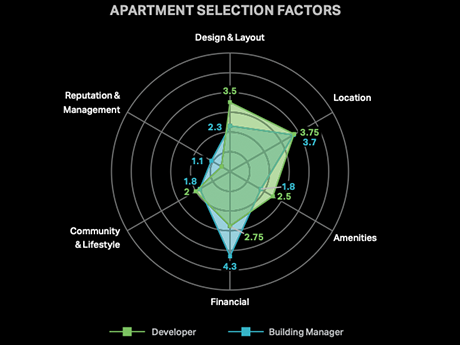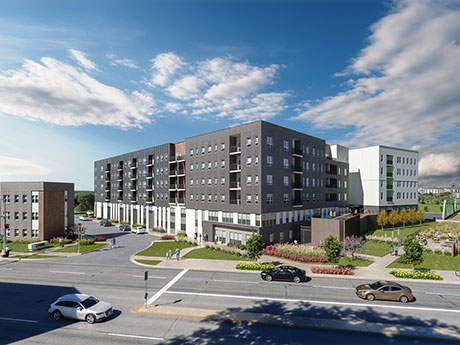DALLAS — As is the case for many commercial asset classes and markets in 2025, there is an expectation of elevated deal volume for investment sales of affordable housing properties in Texas. But brokers in that space caution that the rebound will likely be marginal and is not necessarily indicative of ideal market conditions taking hold. A quintet of panelists broke down this notion and others at the InterFace Texas Affordable & Workforce Housing conference on Feb. 13 at the Westin Galleria Dallas hotel. Mary Ann Bennett, senior managing director …
Features
Late last summer, optimism ran steady across the multifamily investment sales market. Prior to the Federal Reserve’s initial rate cut in September 2024, interest rates had remained stable throughout the year. The outlook was positive. But that more ebullient market proved temporary. The Fed’s interest rate cut had a positive effect on the secured overnight financing rate (SOFR), which fell from 5.3 percent on Sept. 18, 2024, to 4.3 percent in early February 2025. The U.S. 10-year Treasury yield rose during the same period. On Sept. 18, 2024, the 10-year …
Webinar: Resident Retention at Risk — How to Prevent Quiet Leaving
The Feb. 25 webinar “Resident Retention at Risk — How to Prevent Quiet Leaving,” sponsored by Opiniion, brought together industry experts to discuss the most pressing challenges in multifamily and student housing and their strategies to improve resident satisfaction and retention. This one-hour discussion explored key factors influencing move-outs, including communication gaps, maintenance concerns and lease renewal hesitations. Speakers shared insights on effective property management strategies, community-building initiatives and engagement tactics that drive resident loyalty. The session highlighted best practices for feedback collection, strategic development and the role of online …
In today’s market, rent increases are no longer enough for many multifamily owners and operators to successfully turn a profit at their properties. Ancillary income has always been part of the apartment revenue model. However, to overcome the challenges of increasing labor costs and the elevated cost of living, it has become more essential than ever for property managers to establish revenue streams beyond the monthly rental rate. “Ancillary income gives property owners a way to cover the costs of services or items provided to residents without raising the rent …
WASHINGTON, D.C. — The Mortgage Bankers Association (MBA) is forecasting that total commercial and multifamily mortgage borrowing and lending will rise to $583 billion in 2025, which is a 16 percent increase from 2024’s estimated total of $503 billion. The Washington, D.C.-based organization made the announcement at its 2025 Commercial/Multifamily Finance Convention and Expo (CREF) event taking place in San Diego. Multifamily lending, which is calculated into the total figure, is expected to rise to $361 billion in 2025 — also a 16 percent increase from last year’s estimate of …
DALLAS — Affordability is more important to renters than location and amenities, according to a study from Hugo, the research team of Dallas-based architect Corgan. The Residency Reshaped report examined how renters’ priorities have shifted because of hybrid work trends, high costs of living and inflation. Researchers surveyed 1,480 renters in six Sun Belt markets: Atlanta, Austin, Dallas, Denver, Nashville and Phoenix. Residency Reshaped targeted renters between the ages of 25 and 45 who had leased for at least one year and who paid at least $1,500 per month in rent. The research team …
Housing affordability continues to be a pressing issue across the country. According to the National Low Income Housing Coalition, the U.S. has a shortage of 7.3 million rental homes affordable and available to renters with extremely low incomes. There are 34 affordable and available rental homes for every 100 extremely low-income renter households, which are defined as households either at or below the federal poverty guideline or 30 percent of the area median income (AMI), whichever is higher. “The country is facing a severe shortage of high-quality affordable housing, with …
In the multifamily housing industry, accessibility compliance isn’t just about following regulations — it’s about protecting investments, ensuring equal access for all residents and mitigating risk. Yet many property owners find themselves facing costly retrofits and legal exposure due to what experts call “death by a thousand wrong answers.” Not getting any advice can be just as bad as getting a lot of wrong advice from unqualified sources. It is imperative that you receive guidance from experts who understand the nuances and overlap of different regulations. If you don’t, you …
Owning multifamily real estate isn’t just about consistent rental income, it’s a powerful tool for building long-term wealth. But here’s what many investors miss: Your property could be a gold mine of untapped tax savings that can significantly boost cash flow. By using the right tax strategies, property owners can unlock thousands of dollars — sometimes millions — in deductions, freeing up capital that can be reinvested back into your portfolio for upgrades, new technologies, hiring staff and more. Two key strategies that can supercharge your savings are cost segregation …
RealPage has a new app for residents called LOFT that’s designed to take the sting out of several operational pain points. The app comes on the heels of a survey of residents and property managers. The Richardson, Texas-based commercial real estate tech and data company queried more than 75 owners and operators to uncover which service objectives property managers were struggling to meet. The survey show that an overwhelming 97 percent of residents indicated they would be more likely to renew their lease if working with their property manager were as …










